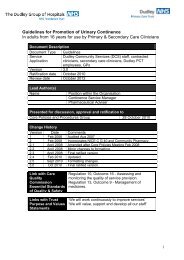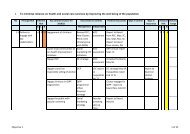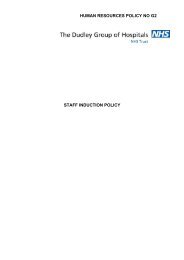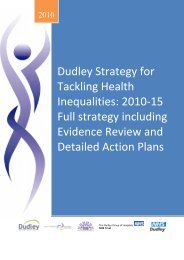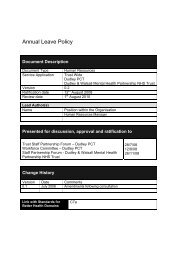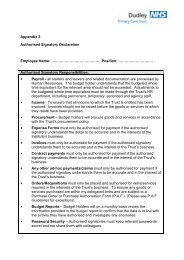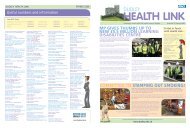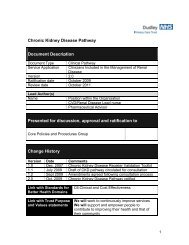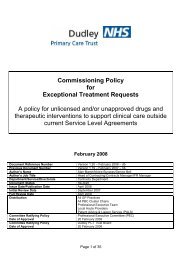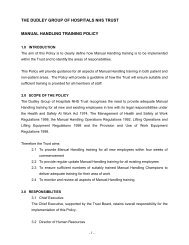Medicines Management Policy - Dudley Primary Care Trust
Medicines Management Policy - Dudley Primary Care Trust
Medicines Management Policy - Dudley Primary Care Trust
You also want an ePaper? Increase the reach of your titles
YUMPU automatically turns print PDFs into web optimized ePapers that Google loves.
10.3 Prescribing Controlled Drugs<br />
10.3.1 Legal Prescription requirements<br />
Prescriptions written for Schedule 2 and 3 controlled drugs and marked as CD<br />
in the BNF, with the exception of temazepam and Phenobarbital are subject to<br />
the following strict legal requirements (see relevant BNF section):<br />
a) Be printed or written in ink, or other indelible substance<br />
b) Specify the dose, dosage form (e.g. tablets) and where appropriate the<br />
strength of the preparation.<br />
c) State in words and figures the total quantity of the drug or total<br />
number of dose units that are to be supplied or given.<br />
d) Bear the patient/client's name, address and registration number.<br />
e) Be dated<br />
f) Be signed (not just initialled) by the prescriber.<br />
g) Supply should be no more than 30 days supply (except in exceptional<br />
clinical circumstances). N.B. On FP10MDA forms only 14 days supply<br />
is permitted.<br />
N.B.<br />
* All CD prescriptions are valid for 28 days from date on prescription for<br />
S2, 3 and 4 CDs (does not apply to S5).<br />
* Dental prescriptions must have written the words “for dental<br />
treatment only”.<br />
10.3.2 Safety issues<br />
(see NPSA alert 2008/RRR05 Reducing Dosing Errors with Opioid <strong>Medicines</strong><br />
http://www.npsa.nhs.uk/nrls/alerts-and-directives/rapidrr/reducing-dosingerrors-with-opioid-medicines/<br />
)<br />
When opioid medicines are prescribed, dispensed or administered, in anything<br />
other than acute emergencies, the healthcare practitioner concerned, or their<br />
clinical supervisor, should:<br />
• Confirm any recent opioid dose, formulation, frequency of administration and<br />
any other analgesic medicines prescribed for the patient. This may be done for<br />
example through discussion with the patient or their representative (although<br />
not in the case of treatment for addiction), the prescriber or through medication<br />
records.<br />
• Ensure where a dose increase is intended, that the calculated dose is safe for<br />
the patient (e.g. for oral morphine or oxycodone in adult patients, not normally<br />
more than 50% higher than the previous dose).<br />
31




